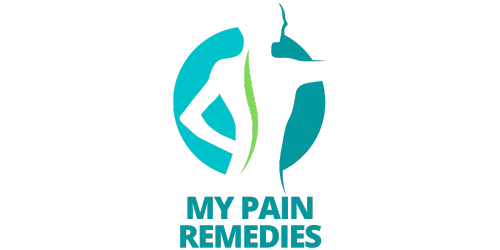Have you ever found yourself struggling with chronic pain? If so, look no further than Blossom Pain Management. With a name that mirrors their mission, Blossom Pain Management provides effective and personalized solutions to help you regain control and find relief from your pain. With their expert team of professionals, state-of-the-art technology, and a holistic approach to pain management, Blossom Pain Management is dedicated to improving your quality of life and helping you bloom again. Say goodbye to suffering and hello to a pain-free future with Blossom Pain Management.
What is Blossom Pain Management?
Definition of Blossom Pain Management
Blossom Pain Management is a comprehensive approach to treating various types of pain. It focuses on providing personalized and multidisciplinary care to individuals suffering from chronic, acute, postoperative, musculoskeletal, nerve, cancer, and headache-related pain. The main goal of Blossom Pain Management is to improve the quality of life for patients by reducing pain and enhancing their overall well-being.
Overview of the Approach
Blossom Pain Management takes a holistic approach by considering the physical, emotional, and psychological aspects of pain. It recognizes that pain is a complex phenomenon that differs from person to person. The approach involves a variety of treatment modalities that are tailored to meet the unique needs of each patient. These modalities include medical evaluation and diagnosis, multimodal pain management, physical therapy, occupational therapy, psychological counseling, interventional procedures, pharmacological interventions, alternative and complementary therapies, patient education, and self-management.
Philosophy behind Blossom Pain Management
The philosophy behind Blossom Pain Management is rooted in the belief that every individual’s pain experience is unique and requires a personalized approach to treatment. It recognizes that pain is not only a physical sensation but also has emotional, psychological, and social dimensions. The philosophy emphasizes the importance of a collaborative and multidisciplinary approach involving healthcare professionals from various disciplines, such as pain management specialists, physical therapists, occupational therapists, psychologists, and pharmacists. The goal is to provide comprehensive care that addresses the underlying causes of pain and supports the patient’s overall well-being.
Common Types of Pain Managed
Chronic Pain
Chronic pain refers to persistent pain that lasts for extended periods, typically beyond three to six months. It can have various underlying causes, such as injury, inflammation, or nerve damage. Blossom Pain Management specializes in the treatment of chronic pain and aims to reduce pain levels, improve functionality, and enhance the patient’s quality of life.
Acute Pain
Acute pain is typically short-lived and occurs as a result of injury, surgery, or trauma. Blossom Pain Management focuses on providing immediate relief through a combination of medication management, interventional procedures, and other modalities to prevent the acute pain from becoming chronic.
Postoperative Pain
After undergoing surgery, many patients experience postoperative pain. Blossom Pain Management offers specialized treatment plans to manage postoperative pain and facilitate a smooth recovery process. The approach may include a combination of medications, interventional procedures, physical therapy, and patient education.
Musculoskeletal Pain
Musculoskeletal pain affects the muscles, bones, ligaments, tendons, and other structures of the musculoskeletal system. It can be caused by various conditions, such as arthritis, fibromyalgia, or sports injuries. Blossom Pain Management provides tailored treatment plans that may include physical therapy, medication management, manual therapy techniques, and lifestyle modifications to alleviate musculoskeletal pain.
Nerve Pain
Nerve pain, also known as neuropathic pain, arises from damage or dysfunction of the nerves. It can be characterized by shooting, burning, or tingling sensations. Blossom Pain Management offers interventions that target the specific mechanisms involved in nerve pain, including medications, nerve blocks, and other interventional procedures.
Cancer Pain
Cancer pain can result from the disease itself or its treatment. It can be acute or chronic and significantly impact a patient’s quality of life. Blossom Pain Management works closely with oncologists and provides specialized care to manage cancer-related pain, enhance pain control, and improve overall well-being.
Headaches and Migraines
Blossom Pain Management recognizes the debilitating impact of headaches and migraines on individuals’ lives. The approach includes a comprehensive evaluation to identify triggers and appropriate treatment strategies, which may involve lifestyle modifications, medication management, behavioral interventions, and alternative therapies.

Benefits of Blossom Pain Management
Improved Quality of Life
One of the primary benefits of Blossom Pain Management is the improved quality of life it offers patients. By addressing pain from a multidimensional perspective and providing personalized treatment plans, patients can experience reduced pain levels, increased functionality, and a better overall sense of well-being.
Reduced Reliance on Medication
Blossom Pain Management strives to reduce the reliance on medications, particularly opioids, for pain management. By utilizing a multimodal approach that incorporates non-invasive techniques, alternative therapies, and lifestyle modifications, patients can minimize the need for high doses of medication and the associated risks, such as tolerance, dependence, and side effects.
Individualized Treatment Plans
Every patient at Blossom Pain Management receives an individualized treatment plan that takes into account their specific pain condition, medical history, lifestyle, and goals. The approach recognizes that pain is a subjective experience and tailors treatment strategies accordingly. This individualized approach ensures that patients receive the most appropriate and effective care for their unique needs.
Non-Invasive Techniques
Blossom Pain Management focuses on utilizing non-invasive techniques whenever possible. This approach minimizes the risks and complications associated with invasive procedures and surgery, providing patients with safe and effective treatment options.
Emotional and Psychological Support
Pain is not only a physical sensation but also has significant emotional and psychological impacts. Blossom Pain Management acknowledges the importance of addressing the emotional and psychological aspects of pain and provides comprehensive support to help patients cope with the emotional challenges that arise from living with chronic pain. This may involve counseling, support groups, and other behavioral interventions to improve mental well-being and overall quality of life.
Components of Blossom Pain Management
Medical Evaluation and Diagnosis
The first step in Blossom Pain Management is a thorough medical evaluation and diagnosis. This process involves a comprehensive review of the patient’s medical history, a detailed physical examination, and diagnostic tests, such as imaging studies, blood tests, and nerve conduction studies. The goal is to identify the underlying cause of the pain and develop an appropriate treatment plan.
Multimodal Pain Management
Blossom Pain Management employs a multimodal approach that combines various treatment modalities to achieve optimal pain relief. This may include a combination of medications, interventional procedures, physical and occupational therapy, psychological counseling, and alternative therapies. The multimodal approach allows for a comprehensive and holistic treatment plan that targets the different aspects of pain.
Physical Therapy
Physical therapy plays a crucial role in Blossom Pain Management. It involves the use of exercises, manual therapy techniques, and other physical modalities to improve strength, flexibility, and mobility. Physical therapists work closely with patients to design individualized exercise programs that help manage pain, restore function, and promote overall well-being.
Occupational Therapy
Occupational therapy focuses on improving a patient’s ability to participate in meaningful activities and daily functions despite their pain. Occupational therapists assist patients in developing techniques and adapting their environments to make daily activities more manageable. They also provide education on energy conservation, body mechanics, and ergonomic principles to prevent pain exacerbation.
Psychological Counseling
Blossom Pain Management recognizes the strong connection between pain and emotional well-being. Psychological counseling is an essential component of the approach, and it aims to address the emotional and psychological aspects of pain. Psychologists and counselors provide individual and group therapy sessions, teach relaxation techniques, and help patients develop coping mechanisms to manage pain-related distress.
Interventional Procedures
Interventional procedures are invasive techniques performed by pain management specialists to directly target the source of pain. These procedures may include nerve blocks, epidural injections, joint injections, spinal cord stimulation, and radiofrequency ablation. Blossom Pain Management utilizes interventional procedures when appropriate to provide targeted pain relief and restore functionality.
Pharmacological Interventions
Medications form an integral part of the Blossom Pain Management approach. Pain management specialists are adept in utilizing various medications to alleviate pain, reduce inflammation, and improve overall well-being. The medications prescribed may include analgesics, anti-inflammatory drugs, antidepressants, anticonvulsants, and topical agents. The choice of medication depends on the type of pain, the cause, and individual patient factors.
Alternative and Complementary Therapies
Blossom Pain Management recognizes the value of alternative and complementary therapies in managing pain. These therapies may include acupuncture, acupressure, massage therapy, chiropractic care, herbal medicine, and mind-body techniques. These modalities aim to enhance pain management, promote relaxation, and support the overall well-being of patients.
Patient Education and Self-Management
Empowering patients with knowledge and skills is a crucial component of Blossom Pain Management. Patients receive comprehensive education about their pain condition, its management, and strategies for self-care. This education helps patients develop self-management techniques, such as modifying daily activities, practicing good posture, employing stress reduction strategies, and adhering to their treatment plans. By actively participating in their care, patients can take control of their pain and improve their outcomes.

The Role of a Pain Management Specialist
Qualifications and Training
Pain management specialists are physicians who have completed specialized training in the field of pain medicine. They are typically board-certified in Anesthesiology or Physical Medicine and Rehabilitation and have undergone additional fellowship training in Pain Medicine. Pain management specialists possess a deep understanding of the complex mechanisms of pain and are equipped with the knowledge and skills to diagnose and treat various pain conditions.
Assessment and Diagnosis
Pain management specialists play a crucial role in evaluating and diagnosing pain conditions. They conduct comprehensive assessments, taking into account the patient’s medical history, physical examination findings, and diagnostic test results. By carefully analyzing these factors, pain management specialists can accurately identify the underlying causes of pain and develop an appropriate treatment plan.
Treatment Planning
After diagnosing a patient’s pain condition, pain management specialists develop individualized treatment plans. These plans consider the patient’s unique needs, medical history, underlying causes of pain, and goals. The treatment plan may include a combination of medication management, interventional procedures, physical therapy, occupational therapy, psychological counseling, and alternative therapies.
Procedure Execution
Pain management specialists are skilled in performing a variety of interventional procedures as part of the treatment plan. These procedures may involve injecting medications, performing nerve blocks, implanting devices, or using minimally invasive techniques to provide pain relief. Pain management specialists use their expertise to execute these procedures safely and effectively, ensuring the best possible outcomes for patients.
Monitoring and Follow-up
Pain management specialists closely monitor their patients’ progress throughout the course of treatment. They assess the effectiveness of interventions, manage any side effects or complications that may arise, and make necessary modifications to the treatment plan as needed. Regular follow-up appointments allow pain management specialists to ensure that patients are receiving the most appropriate and effective care for their pain condition.
Collaboration with Other Healthcare Professionals
Collaboration is a key aspect of the role of a pain management specialist. They work closely with other healthcare professionals, such as primary care physicians, surgeons, physical therapists, psychologists, and pharmacists, to provide comprehensive and coordinated care to patients. By collaborating with other specialists, pain management specialists can ensure that patients receive the most well-rounded and effective treatment for their pain condition.
Patient Evaluation and Individualized Care
Initial Consultation and Medical History
During the initial consultation, patients undergo a detailed evaluation and provide their medical history to the pain management specialist. This information includes any previous diagnoses, treatments, surgeries, or medications related to their pain condition. The pain management specialist carefully reviews this information to gain a comprehensive understanding of the patient’s pain history and identify any potential underlying causes.
Physical Examination
A thorough physical examination is conducted to assess the patient’s pain condition. The pain management specialist may evaluate muscle strength, range of motion, joint stability, and sensory functions, among other things. The physical examination helps pinpoint specific areas of pain and provides additional insight into the underlying causes of the pain.
Diagnostic Testing
Diagnostic tests are used to further investigate the underlying causes of pain and confirm or refine the diagnosis. These tests may include imaging studies, such as X-rays, MRIs, or CT scans, to visualize the affected areas. Additionally, nerve conduction studies or electromyography may be performed to evaluate nerve function and identify any nerve damage or abnormalities.
Comprehensive Pain Assessment
A comprehensive pain assessment is conducted to gather detailed information about the patient’s pain experience. This assessment involves using validated pain scales to measure pain intensity, duration, and location. The pain management specialist also considers the impact of pain on daily activities, sleep, mood, and overall quality of life. This in-depth assessment allows for a better understanding of the patient’s pain and the development of an appropriate treatment plan.
Development of Treatment Plan
Based on the information gathered from the evaluation and assessment process, the pain management specialist develops an individualized treatment plan. This plan takes into account the unique needs and goals of the patient, as well as the underlying causes of their pain. The treatment plan may include a combination of medication management, interventional procedures, physical and occupational therapy, psychological counseling, and alternative therapies.
Regular Reassessment and Modifications
Pain management is an ongoing process that requires regular reassessment and modifications to the treatment plan. The pain management specialist continually monitors the patient’s progress, evaluates the effectiveness of the interventions, and makes any necessary adjustments to optimize pain relief and functionality. Regular reassessment ensures that the treatment plan remains tailored to the patient’s evolving needs and provides the best possible outcomes.

Treatment Modalities in Blossom Pain Management
Medication Management
Medication management is an integral part of Blossom Pain Management. Pain management specialists have expertise in prescribing and managing various medications to address different types of pain. These may include non-opioid analgesics, opioids, anti-inflammatory drugs, muscle relaxants, antidepressants, anticonvulsants, and topical agents. The choice of medication depends on the type and severity of pain, the underlying cause, and individual patient factors.
Physical Rehabilitation
Physical rehabilitation plays a vital role in managing pain and restoring functionality. It involves a combination of exercise programs, designed by physical therapists, to improve strength, flexibility, and mobility. Physical rehabilitation programs may include aerobic exercises, resistance training, stretching, and balance exercises. The goal is to reduce pain, improve endurance, restore range of motion, and enhance overall physical well-being.
Manual Therapy
Manual therapy techniques, such as joint mobilization, soft tissue manipulation, and myofascial release, are often used in Blossom Pain Management. These hands-on techniques are performed by physical therapists or other qualified healthcare professionals to reduce pain, improve flexibility, and restore normal joint function. Manual therapy can be particularly beneficial for musculoskeletal pain and conditions such as arthritis or fibromyalgia.
Interventional Pain Procedures
Interventional pain procedures involve the direct application of medications or the use of minimally invasive techniques to target specific pain sources. These procedures are typically performed by pain management specialists and may include nerve blocks, epidural injections, joint injections, radiofrequency ablation, and spinal cord stimulation. Interventional pain procedures can provide targeted pain relief and improve overall functionality.
Implantable Devices
Implantable devices, such as spinal cord stimulators and intrathecal drug delivery systems, are advanced pain management techniques offered by Blossom Pain Management. These devices are surgically implanted and deliver targeted pain relief by modulating the electrical signals within the nervous system or administering medications directly to the spinal cord. Implantable devices can be a viable option for patients who have not responded adequately to other treatment modalities.
Psychological and Behavioral Interventions
Psychological and behavioral interventions are essential components of Blossom Pain Management. These interventions aim to address the emotional and psychological aspects of pain, as well as promote coping strategies and enhance overall well-being. Psychological interventions may include cognitive-behavioral therapy, meditation, relaxation training, and biofeedback. These techniques can help patients manage pain-related distress, reduce anxiety and depression, and improve overall mental health.
Acupuncture and Acupressure
Acupuncture and acupressure are alternative therapies that involve the insertion of fine needles or the application of pressure on specific points of the body to alleviate pain. These techniques are based on traditional Chinese medicine principles and aim to balance the flow of energy, or Qi, within the body. Acupuncture and acupressure have been shown to be effective in managing various types of pain, including chronic pain and musculoskeletal pain.
Exercise and Activity Modification
Exercise and activity modification are important aspects of Blossom Pain Management. Physical therapists and pain management specialists work with patients to develop tailored exercise programs that promote pain relief, improve strength and endurance, and enhance overall physical function. Additionally, activity modification techniques are taught to patients to prevent pain exacerbation and promote the safe and effective performance of daily activities.
Relaxation Techniques
Relaxation techniques, such as deep breathing exercises, progressive muscle relaxation, guided imagery, and mindfulness meditation, can be beneficial in managing pain. These techniques help reduce muscle tension, promote relaxation, and alleviate stress, which can contribute to pain relief. Blossom Pain Management may incorporate relaxation techniques to complement other treatment modalities and enhance overall well-being.
Nutritional Counseling
Nutritional counseling is a valuable component of Blossom Pain Management. Pain management specialists may work closely with registered dietitians to provide guidance on adopting a healthy diet that supports pain management and overall well-being. Nutritional counseling may involve recommendations for anti-inflammatory foods, appropriate hydration, weight management strategies, and dietary supplements that can have a positive impact on pain levels and overall health.
Assistive Devices
Assistive devices are tools or equipment that aid in daily activities and help manage pain. These devices are often recommended by occupational therapists as part of Blossom Pain Management. Assistive devices may include braces, splints, crutches, canes, walkers, or ergonomic tools. By using these devices, individuals can reduce the strain on affected areas, improve mobility, and enhance their ability to perform daily tasks.
Latest Advances in Blossom Pain Management
Regenerative Medicine
Regenerative medicine is an emerging field that focuses on using the body’s natural healing processes to regenerate damaged tissues and promote pain relief. It involves techniques such as platelet-rich plasma (PRP) injections, stem cell therapy, and growth factor therapies. These approaches can be particularly beneficial for musculoskeletal conditions, such as osteoarthritis or tendon injuries, and offer the potential for long-term pain relief and functional improvement.
Minimally Invasive Procedures
Advancements in technology have led to the development of minimally invasive procedures in pain management. These procedures involve smaller incisions, decreased tissue trauma, and shorter recovery times compared to traditional surgical approaches. Examples of minimally invasive procedures include endoscopic discectomy for herniated discs, percutaneous vertebroplasty or kyphoplasty for vertebral fractures, and minimally invasive decompression techniques for spinal stenosis. Minimally invasive procedures allow for targeted pain relief while minimizing the risks associated with open surgeries.
Telemedicine and Remote Monitoring
Telemedicine has revolutionized healthcare, including pain management. Blossom Pain Management utilizes telemedicine to provide remote consultations, follow-ups, and monitoring. Patients can connect with their pain management specialist via video conferencing, allowing for convenient access to care without the need for in-person visits. Remote monitoring tools, such as wearable devices and mobile applications, enable patients to track their pain levels, activity levels, and other health parameters, providing valuable data for treatment customization.
Precision Medicine
Precision medicine involves tailoring treatment plans to individual patients based on their genetic makeup, lifestyle factors, and other personalized data. In the context of Blossom Pain Management, precision medicine approaches can help identify genetic markers or other factors that influence pain sensitivity, response to medications, and the likelihood of developing chronic pain. This information can assist pain management specialists in designing more targeted and effective treatment plans.
Virtual Reality
Virtual reality (VR) technology has gained attention as a non-pharmacological pain management tool. By immersing patients in a virtual environment, VR can distract and engage their senses, reducing their perception of pain. Virtual reality can be particularly beneficial for acute procedural pain, chronic pain conditions, and anxiety management for patients undergoing various treatments.
Pain Tracking and Monitoring Apps
With the increasing use of smartphones and wearable devices, pain tracking and monitoring apps have become popular tools in pain management. These apps allow patients to track their pain levels, identify triggers, and monitor the effectiveness of different interventions. Pain tracking and monitoring apps promote active patient involvement in pain management and provide valuable data for pain management specialists to further optimize treatment plans.
Mind-Body Therapies
Mind-body therapies, such as mindfulness-based stress reduction, yoga, tai chi, and meditation, have shown promising results in pain management. These therapies emphasize the connection between the mind and body and encourage patients to cultivate a state of relaxation and self-awareness. Mind-body therapies can help reduce stress, improve sleep, and enhance overall well-being, leading to a reduction in pain levels.

Challenges and Limitations
Limited Access to Pain Specialists
One of the challenges in pain management is the limited access to pain management specialists. In many regions, there is a shortage of healthcare professionals with specialized training in pain medicine. This limitation can result in delayed diagnosis, inadequate treatment options, and increased healthcare disparities for individuals with chronic or complex pain conditions.
Cost of Treatment
Comprehensive pain management can involve multiple modalities, medications, diagnostic tests, and procedures, which can be costly. The financial burden of pain management, coupled with the potential lack of insurance coverage for certain treatments, may restrict access to comprehensive care for some individuals. The cost of treatment can be a barrier to receiving optimal pain management and may require creative solutions to ensure affordability.
Subjectivity of Pain
One of the inherent challenges in pain management is the subjective nature of pain. Pain is a highly individualized experience, and it can be challenging to objectively assess and measure pain intensity or relief. This subjectivity can make it difficult to evaluate treatment outcomes, customize treatment plans, and determine the most appropriate interventions for each patient.
Chronic Nature of Some Conditions
Many pain conditions, such as fibromyalgia, neuropathic pain, or rheumatoid arthritis, are chronic in nature. Managing chronic pain requires a long-term commitment to treatment, self-management, and lifestyle modifications. The chronicity of these conditions can be emotionally and physically exhausting for patients, requiring ongoing support and collaboration with healthcare professionals.
Potential Side Effects of Medications and Procedures
Like any medical intervention, the use of medications and interventional procedures in pain management carries potential risks and side effects. Medications may have adverse effects, including gastrointestinal upset, sedation, addiction, or dependence. Interventional procedures carry the risk of infection, bleeding, nerve injury, or allergic reactions. Pain management specialists carefully evaluate the risks and benefits of each intervention and educate patients on potential side effects before proceeding.
Psychological Factors
Psychological factors, such as anxiety, depression, and stress, can significantly impact the experience and perception of pain. Addressing these psychological factors is essential in achieving optimal pain management outcomes. However, integrating psychological interventions into pain management can present challenges, including the availability of mental health resources and the stigma associated with seeking mental health support.
Conclusion
In conclusion, Blossom Pain Management offers a comprehensive and individualized approach to managing pain. By recognizing the multi-faceted nature of pain and addressing the physical, emotional, and psychological aspects, Blossom Pain Management aims to improve the overall quality of life for individuals experiencing pain. Through a combination of medication management, interventional procedures, physical and occupational therapy, psychological counseling, and alternative therapies, Blossom Pain Management provides patients with a wide range of treatment options tailored to meet their unique needs. By utilizing the latest advances in pain management, collaborating with other healthcare professionals, and empowering patients through education and self-management, Blossom Pain Management strives to provide optimal pain relief, restore functionality, and enhance overall well-being. With ongoing advancements in the field, Blossom Pain Management continues to evolve and improve outcomes, offering hope and relief to individuals living with pain.


